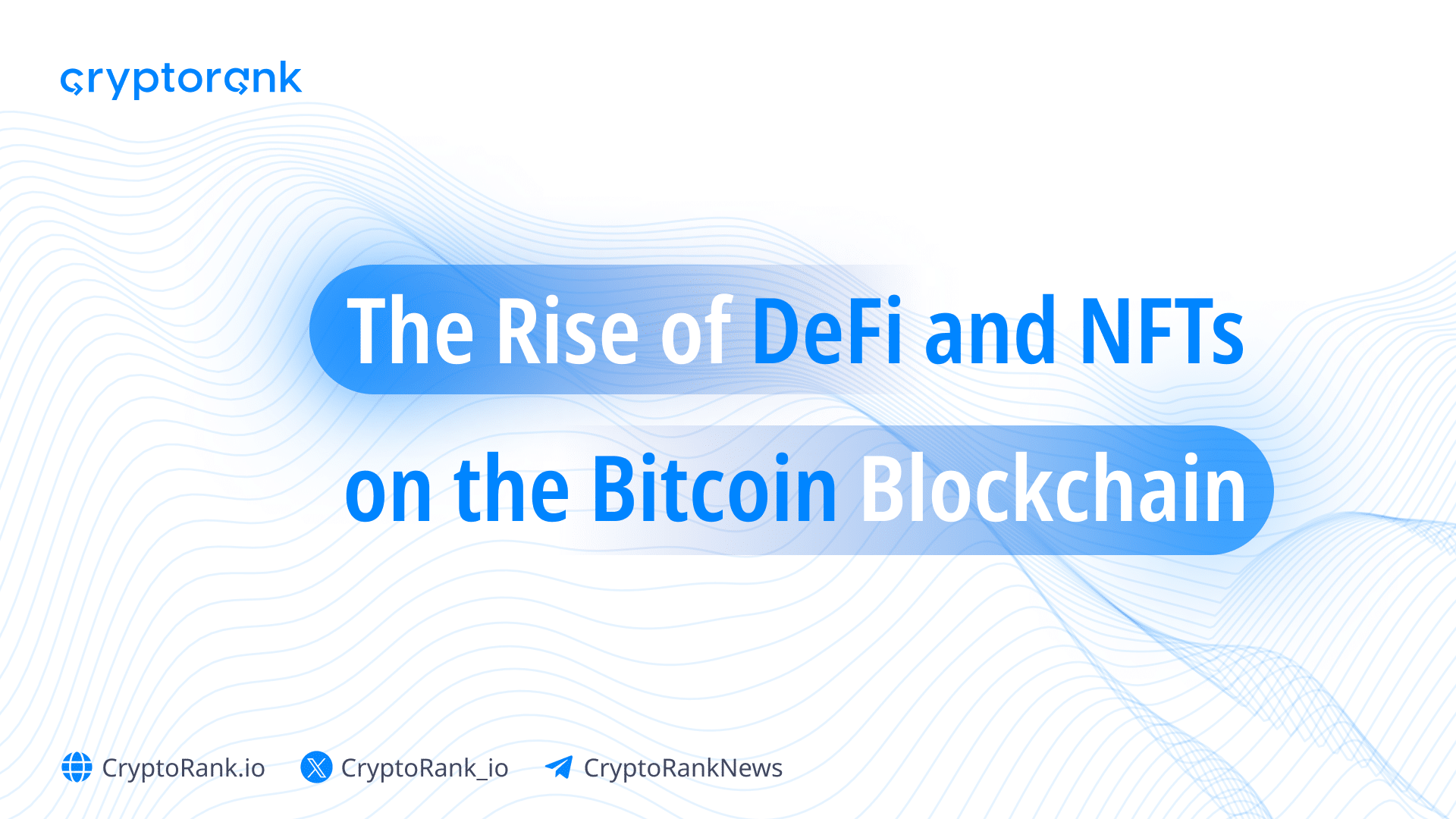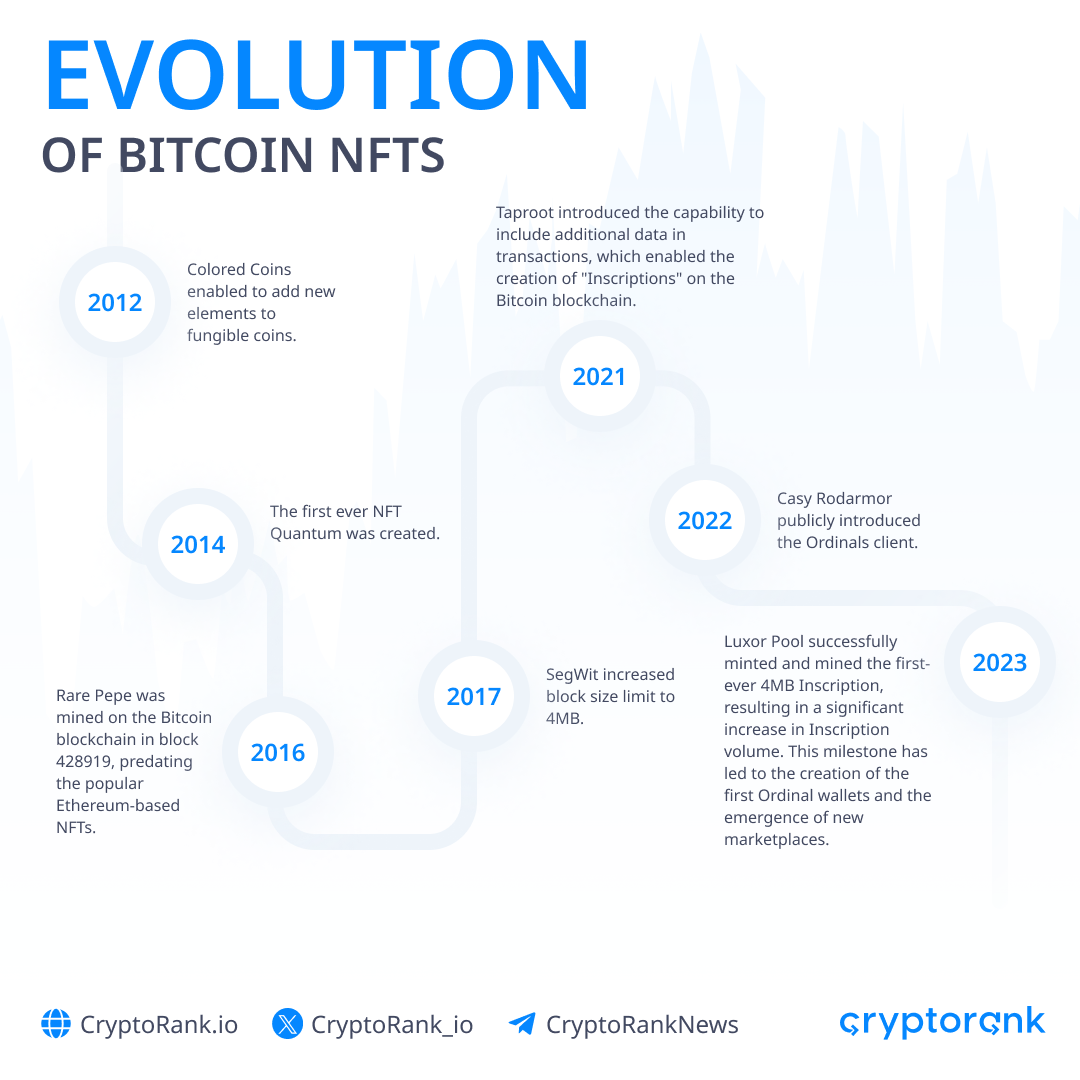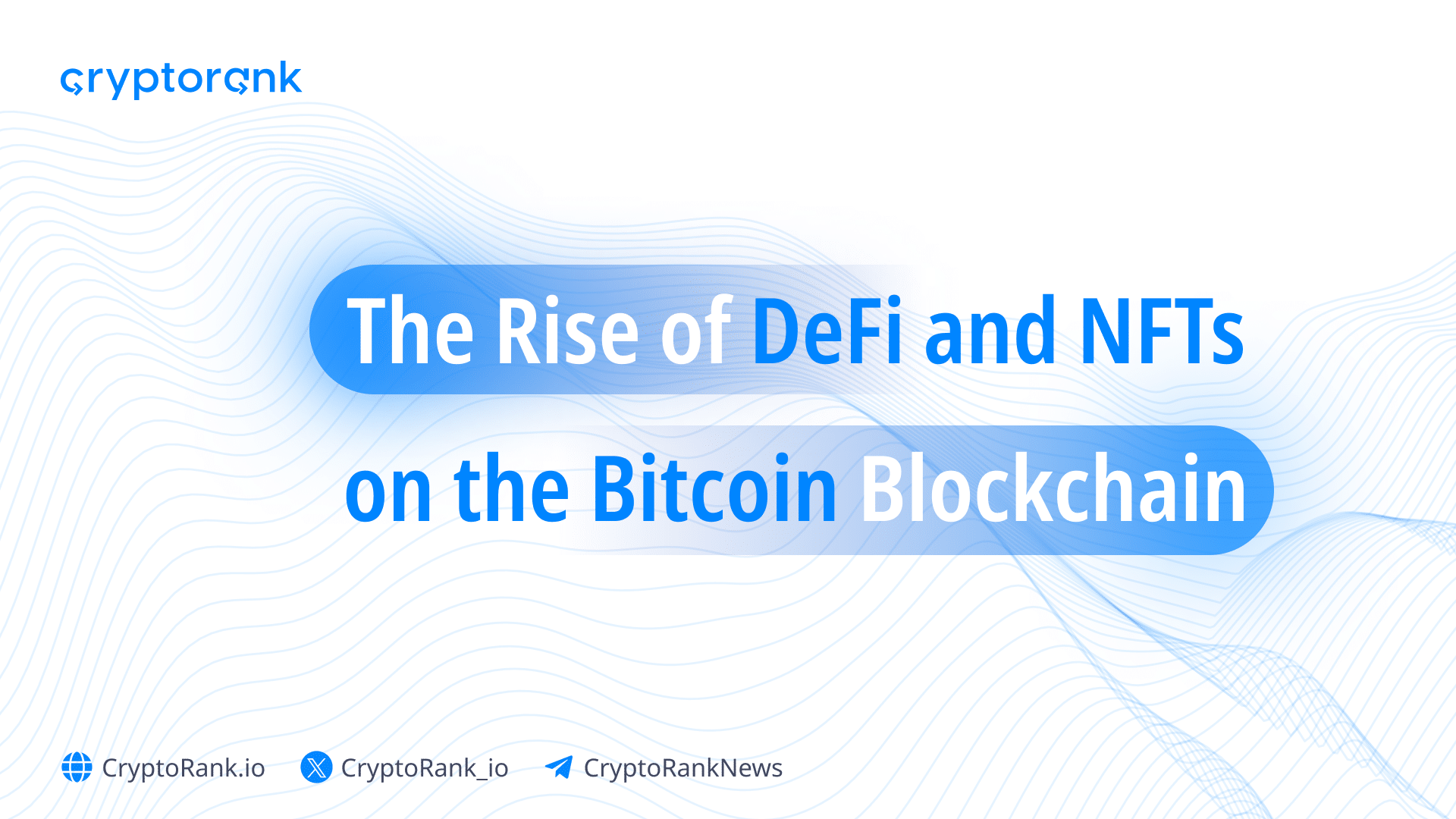The Rise of DeFi and NFTs on the Bitcoin Blockchain
With a growing interest in Bitcoin, especially with the anticipated ETF launch, its ecosystem has been rapidly expanding. One of the most popular developments happening on Bitcoin right now is BRC-20, which is not only driving the growth of the Bitcoin NFT market but also expanding the DeFi sector. In this document, we will delve into the latest developments on the Bitcoin blockchain.

Decentralized Finance (DeFi) has caused a significant upheaval in the cryptocurrency realm. It has propelled Ethereum to the position of the second-largest blockchain by market capitalization and has given rise to numerous EVM-based and non-EVM blockchains.
A less widely recognized fact is that DeFi and NFT are also making strides in the realm of Bitcoin. They are demonstrating rapid growth in Total Value Locked (TVL) and NFT trading volume. This article examines the rise of DeFi and NFT activity on Bitcoin.
Bitcoins Becomes One of the Main Chains for NFT
Bitcoin is quickly gaining dominance in the NFT market. NFTs on Bitcoin have been around for some time, but they only started gaining popularity this year, coinciding with the growth of Total Value Locked (TVL) and the introduction of Ordinals on the Bitcoin mainnet on January 20, 2023.
Although Ethereum has always been the leading blockchain for NFT trading, other blockchains like Solana, Polygon, and various NFT-specific blockchains like ImmutableX have attempted to create competition. However, it is surprising that the real competition is now coming from Bitcoin. In November, Bitcoin’s share of NFT trading volume surpassed Ethereum’s share, and this trend may continue in December.

Bitcoin Ordinals are the equivalent of non-fungible tokens (NFTs) on the Bitcoin blockchain, using satoshis as the smallest denomination. Each satoshi is assigned a serial number based on its mining order. The Ordinal protocol allows for the creation of NFTs on the main Bitcoin layer by attaching additional data, such as an image or text, to a satoshi.

NFTs were already possible on Bitcoin before the launch of the Ordinal protocol. However, Ordinal inscriptions are directly embedded into individual satoshis and stored in Bitcoin blocks. This means that Ordinals benefit from the security, immutability, and durability of Bitcoin itself.
The hype around Bitcoin NFTs grew rapidly after the launch of Ordinals. However, it quickly declined after a few months. The popularity then returned with the introduction of the BRC-20 token standard. November became the peak month for NFTs on Bitcoin, and December is expected to be even better.



